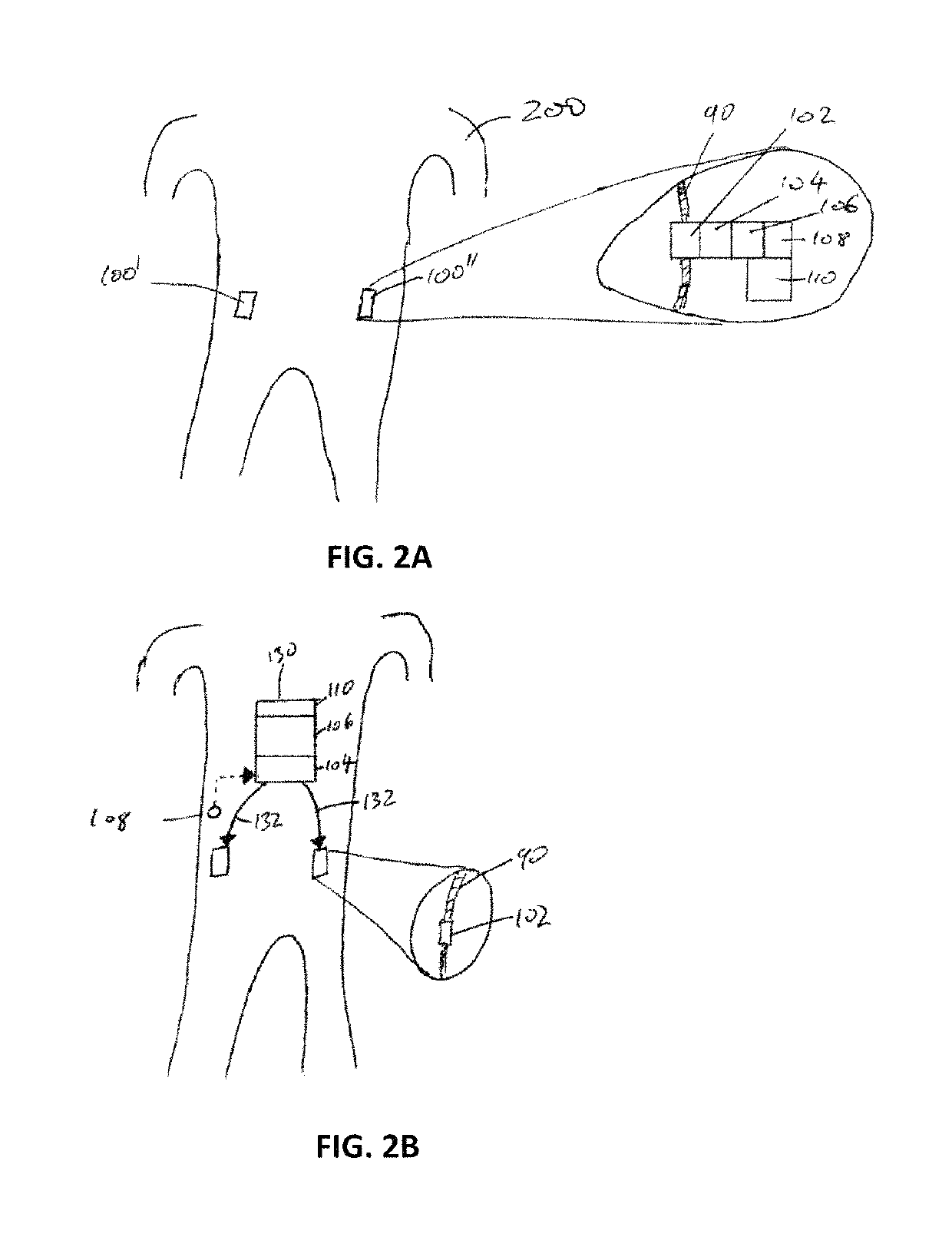Neuromodulation device
a neuromodulation device and neuromodulation technology, applied in the field of medical devices, can solve the problems of pcos, significant unmet medical needs, irregular menstruation and infertility, masculinizing effects, etc., and achieve the effect of improving cyst formation, restoring normal estrous cycling, and effective treatment of polycystic ovarian syndrom
- Summary
- Abstract
- Description
- Claims
- Application Information
AI Technical Summary
Benefits of technology
Problems solved by technology
Method used
Image
Examples
example 1
Generation of PCOS Rat Model
[0169]Estradiol valerate (EV) is a long lasting estradiol form. As described by Lara et al. (Hypothalamic changes in neuroepinephrine release in rats with estradiol valerate-induced polycystic ovaries, Biol. Reprod. 1995 (52): 398-404), the administration of a single pharmacological dose of EV blocks the reproductive hypothalamus and inhibits the cycling ovulatory activity characteristically seen in spontaneous ovulators. When this dose is administrated to prepubertal rats, it accelerates puberty and the rat loses the ability to ovulate in a cyclical manner. The rat does not reach and cyclic estrous activity (i.e. it does not ovulate) as determined by microscopically analysis of vaginal lavages. 60 days after the administration of EV the ovary present phenotypical characteristics of polycystic ovary represented by multiples follicular cyst and no corpus luteum (which is the result of ovulation). The condition is driven by an estradiol-induced hyperactivat...
example 2
Neuromodulatory Device
[0170]Cuff electrodes were custom-fabricated using precise laser patterning from silicone rubber (polydimethylsiloxane) and from embedded platinum foil layer (thickness of 12.5 μm) by Cortec GmbH. The inner cuff diameter was 0.5 mm to match the diameter of the SON. The stimulating cuff containing two electrode sites were connected (through a percutaneous connector) to an external pulse generator worn in a backpack. The stimulating cuff was used for inducing the conduction block in the SON with a kilohertz frequency alternating current (KHFAC).
example 3
Implantation of the Neuromodulatory Device
[0171]Each cuff electrode was secured in place on the functioning SON using three sutures (in a rat which had been unilaterally transected on the opposing SON). FIG. 4 shows the cuff on the nerve before placing the sutures. Two methods for placing percutaneous connectors were used: on the dorsal skin and on the head. The dorsal skin placement was preferred for young subjects with a growing skull, while the head placement was preferred for adult subjects with fully grown skull. Two types of sutures were used: absorbable (PDS) and non-absorbable (monofilament Nylon). The absorbable suture was preferred for long-term implantation time (more than 2 months), while non-absorbable suture was preferred for short-term implantation time (less than 2 months). For closing the skin incision above the cuff electrode implant, we used a continuous subcutaneous suturing technique followed by an application of veterinary cyano-acrylate glue (Dermabond) in ord...
PUM
 Login to View More
Login to View More Abstract
Description
Claims
Application Information
 Login to View More
Login to View More - R&D
- Intellectual Property
- Life Sciences
- Materials
- Tech Scout
- Unparalleled Data Quality
- Higher Quality Content
- 60% Fewer Hallucinations
Browse by: Latest US Patents, China's latest patents, Technical Efficacy Thesaurus, Application Domain, Technology Topic, Popular Technical Reports.
© 2025 PatSnap. All rights reserved.Legal|Privacy policy|Modern Slavery Act Transparency Statement|Sitemap|About US| Contact US: help@patsnap.com



